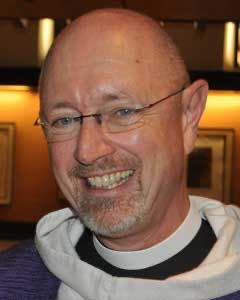IN 1968 TED Hughes, England’s poet laureate (until his death in 1998), wrote a story called The Iron Man for his children to console them after the suicide of their mother, the poet Sylvia Plath. An unusual and affecting story, The Iron Man had a comforting message – life goes on.
Through the efforts of rock star Pete Townsend and theatre director Des McAnuff, this story has been brought to the screen as an animated feature directed by The Simpsons veteran Brad Bird. In the process, Hughes’ story has been transposed from England to Maine, set in the 1950s and re-titled, The Iron Giant. What remains of Hughes’ original story is a relationship between a mechanical man and a little boy; what’s been changed (with Hughes’ blessing) broadens the story’s appeal and delivers messages about accepting differences, understanding anger, and choosing life.
It’s in post-Sputnik USA that young Hogarth Hughes (voice of Eli Marienthal) first encounters the Iron Giant (Vin Diesel). When his TV goes off one night, Hogarth discovers that the antenna is missing, and follows the giant’s trail to the power plant where he saves the robot from electrocution after it chomps on some live wires. That makes the giant his friend forever. With the help of the local scrap metal dealer, a beatnik artist named Dean McCoppin (Harry Connick Jr.), the Iron Giant finds a safe feeding ground and Hogarth finds an ally to keep their metal friend from the government inspector Kent Mansley (Christopher McDonald). It’s Dean, the beatnik artist, who inspires Hogarth to accept differences, and to protect the outcasts from the powerful.
Unlike the Hughes story, Brad Bird’s idea of the Iron Giant is built on the idea, “What if a gun had a soul?” The Iron Giant himself is pretty likable, he learns a basic vocabulary, and carries Hogarth on his hand. But when Hogarth, playing with the metal man, turns a toy gun on him, the giant’s defensive capabilities are revealed. He’s a huge weapon, able to fire missiles and destroy what attacks him. Dean figures out at once that the giant only attacks to ward off danger. Dean and Hogarth’s need to protect this giant becomes more important, as the military is dispatched. Yet they are unable to convince the army generals that the giant is only provoked into attack, so, in the end, the giant chooses to destroy himself so that his human friends can live.
In a summer of gross-out films, here is a movie that gives positive messages to children and adults alike. Acceptance of differences, even protection of those we do not understand is at the heart of this film. Understanding that anger is a response to threat, and learning how to control that response is an important part of this film. But most of all, the message that Hogarth gives the Iron Giant is “you are who you choose to be.”
In the end, the giant chooses the life of his friends over his own life. As he ascends into the sky and collides with the missile intended for his own destruction, what is finally left when the clouds settle is the shape of a cross, a star in the sky.
“Greater love hath no man,” said the Lord Christ, “than to lay down his life for his friends.” Sacrificial love triumphs in this film – a “must-see” for lovers of animation, a good film for children and adults, and, in my view, one of the best films of the summer of ’99.
Peter Elliott is dean of Christ Church Cathedral, Vancouver, and a member of the board of directors of the Vancouver Film Festival.


